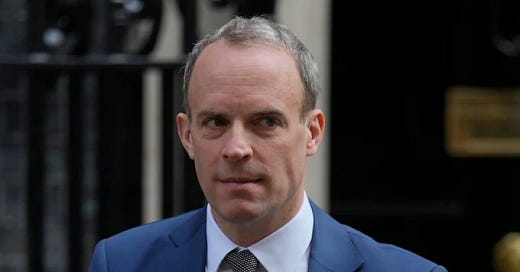The recent allegations of bullying and intimidation against Dominic Raab, the Deputy Prime Minister, have sparked a debate about workplace culture and accountability. While Raab has denied the accusations, the case highlights the importance of creating a safe and respectful workplace for all employees.
If Raab had been an employee of a company, there are several steps that could have been taken to address the issue, including clear company policies, reporting mechanisms, prompt investigation, disciplinary action, training and support, and regular monitoring. These measures could have prevented or addressed the reported bullying and intimidation, ensuring a respectful and safe workplace for everyone involved.
I’ll explore each of these steps below and discuss how they can help create a positive workplace culture that values diversity, inclusion, and respect.
Clear Company Policies
The first step in creating a safe and respectful workplace is to establish clear company policies that outline the expectations and standards of behaviour for all employees. These policies should be communicated effectively to all employees, and they should be regularly reviewed and updated to reflect changing circumstances and best practices.
In the case of Raab, it is unclear whether the government had clear policies on bullying and intimidation other than the ministerial code or whether they were effectively communicated to all employees. Without such policies, employees may not be aware of what constitutes unacceptable behaviour, and they may not feel comfortable reporting incidents of bullying or intimidation.
Reporting Mechanisms
The second step in creating a safe and respectful workplace is to establish effective reporting mechanisms that allow employees to report incidents of bullying, harassment, or discrimination without fear of retaliation. These mechanisms should be easily accessible, confidential, and impartial, and they should provide employees with a range of options for reporting, including anonymous reporting.
In the case of Raab, it is unclear whether there were effective reporting mechanisms in place or whether employees felt comfortable using them. Without such mechanisms, employees may be hesitant to report incidents of bullying or intimidation, fearing that they will not be taken seriously or that they will face retaliation.
Prompt Investigation
The third step in creating a safe and respectful workplace is to have prompt and impartial investigations of reported incidents of bullying, harassment, or discrimination. Investigations should be conducted by trained personnel who are impartial and objective, and they should follow established procedures that ensure fairness and due process.
In the case of Raab, it is unclear whether there was a prompt and impartial investigation of the allegations against him when they were first disclosed. Without such an investigation, employees may feel that their complaints are not taken seriously, and they may lose trust in the company's commitment to creating a safe and respectful workplace.
Disciplinary Action
The fourth step in creating a safe and respectful workplace is to have clear and consistent disciplinary procedures that are applied fairly and consistently to all employees. Disciplinary action should be proportionate to the severity of the offence, and it should be designed to prevent further incidents of unacceptable behaviour.
Without such procedures, employees may feel that there are no consequences for unacceptable behaviour, and they may lose confidence in the company's commitment to creating a safe and respectful workplace.
Training and Support
The fifth step in creating a safe and respectful workplace is to provide employees with training and support that promotes awareness, understanding, and respect for diversity and inclusion. This training should be mandatory for all employees, and it should be regularly updated and reinforced. Without training, employees may not fully understand the impact of their behaviour on others, and they may not appreciate the importance of creating a safe and respectful workplace.
Regular Monitoring
The sixth and final step in creating a safe and respectful workplace is to have regular monitoring and evaluation of the company's policies, procedures, and practices. This monitoring should be conducted by impartial experts who can provide feedback and recommendations for improvement. Check out the local HR consultant or ask me for a recommendation.
It is important to undertake regular monitoring as the company may not be aware of potential issues or trends that could lead to incidents of bullying or intimidation.
Finally . . .
It’s important to create a safe and respectful workplace for all employees. By establishing clear company policies, reporting mechanisms, prompt investigation, disciplinary action, training and support, and regular monitoring, companies can prevent or address incidents of bullying, harassment, or discrimination and create a positive workplace culture that values diversity, inclusion, and respect.




